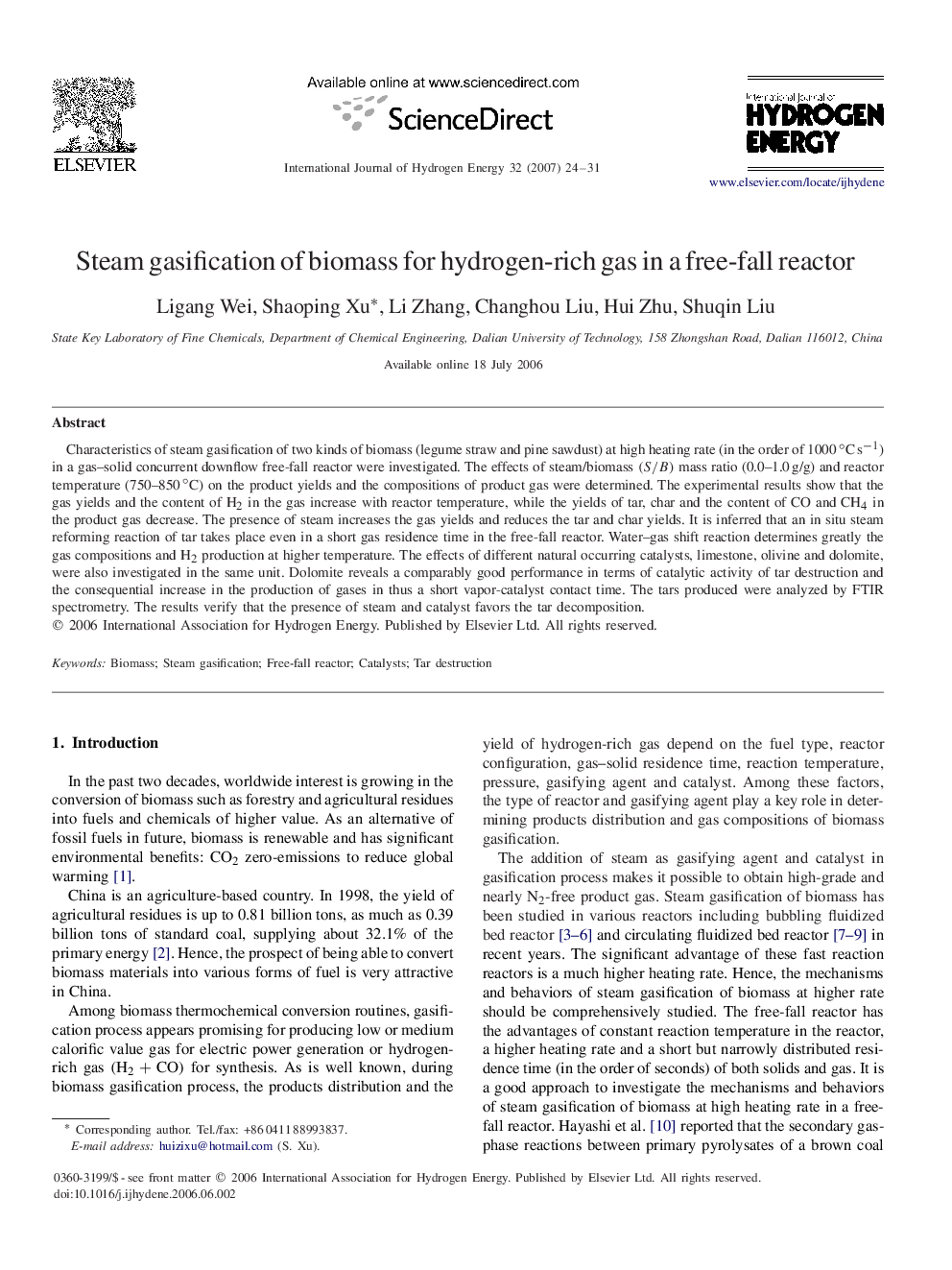| Article ID | Journal | Published Year | Pages | File Type |
|---|---|---|---|---|
| 1280790 | International Journal of Hydrogen Energy | 2007 | 8 Pages |
Characteristics of steam gasification of two kinds of biomass (legume straw and pine sawdust) at high heating rate (in the order of 1000∘Cs-1) in a gas–solid concurrent downflow free-fall reactor were investigated. The effects of steam/biomass (S/B)(S/B) mass ratio (0.0–1.0 g/g) and reactor temperature (750–850∘C) on the product yields and the compositions of product gas were determined. The experimental results show that the gas yields and the content of H2 in the gas increase with reactor temperature, while the yields of tar, char and the content of CO and CH4 in the product gas decrease. The presence of steam increases the gas yields and reduces the tar and char yields. It is inferred that an in situ steam reforming reaction of tar takes place even in a short gas residence time in the free-fall reactor. Water–gas shift reaction determines greatly the gas compositions and H2 production at higher temperature. The effects of different natural occurring catalysts, limestone, olivine and dolomite, were also investigated in the same unit. Dolomite reveals a comparably good performance in terms of catalytic activity of tar destruction and the consequential increase in the production of gases in thus a short vapor-catalyst contact time. The tars produced were analyzed by FTIR spectrometry. The results verify that the presence of steam and catalyst favors the tar decomposition.
